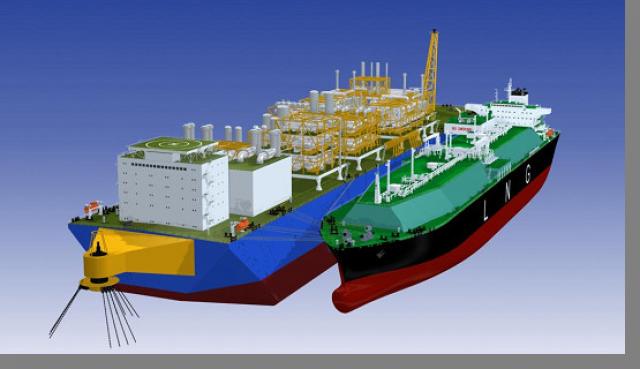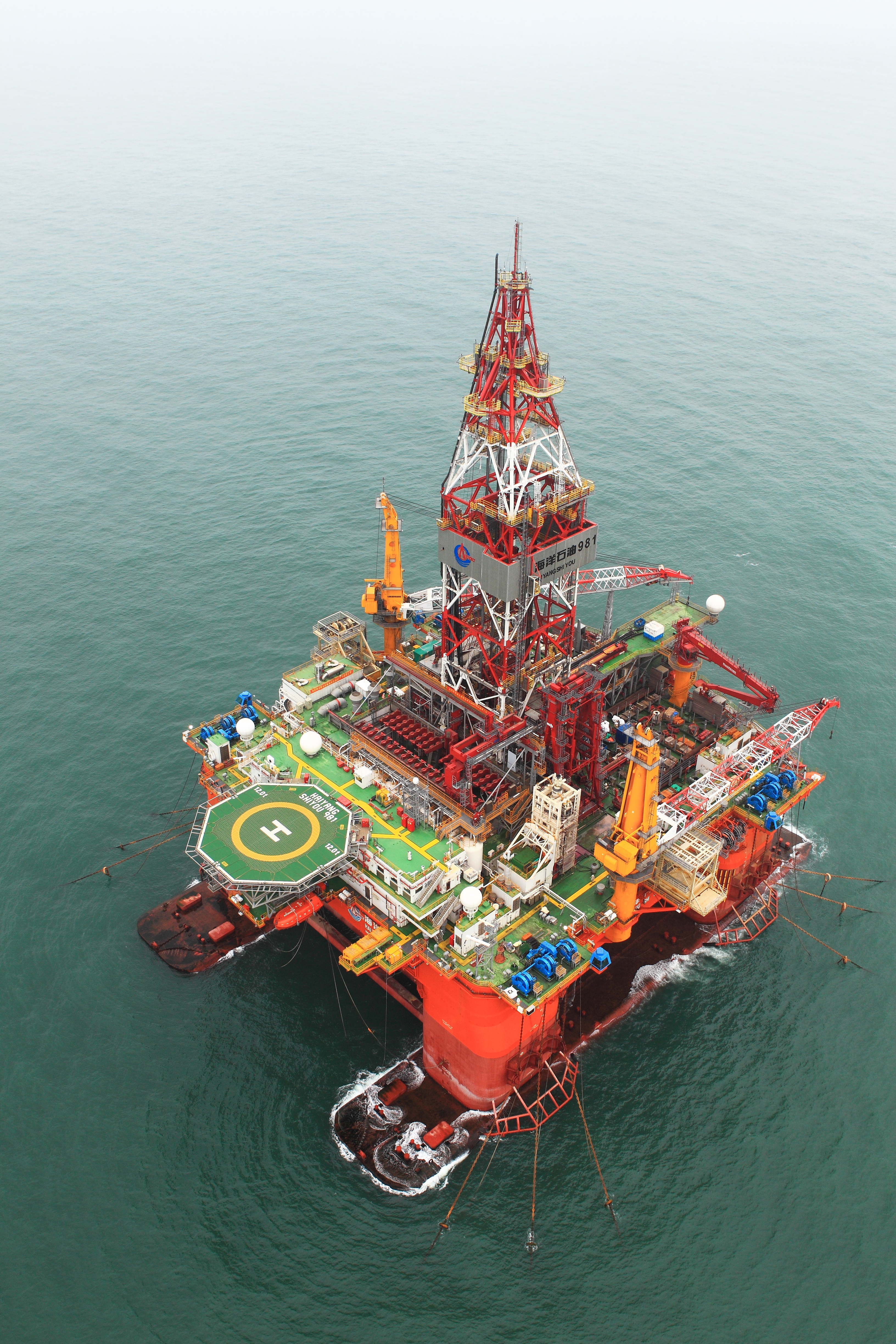
MARIC is evaluating concepts for FLNG units with the goal of enabling deepwater gas development in the South China Sea. (Source: MARIC)
China has established a name for itself as the world’s manufacturing powerhouse, but the country cannot be defined solely by its ability to produce finished goods for international consumption. China is transitioning from a manufacturing superpower to an advanced economy that competes globally in offshore construction, advanced technology, R&D and engineering. Integral to China’s competitive position is the Marine Design & Research Institute of China (MARIC) in Shanghai.
While R&D might not be the first thing that leaps to mind when thinking about China’s offshore industry, it is an established capability at MARIC, which has been carrying out research since its founding in 1950. Expanding into offshore R&D, MARIC officially added offshore specialization to its capabilities in 1970. During the last 50 years MARIC has grown to become the largest offshore R&D institute in China, supporting domestic oil majors CNOOC, CNPC and SINOPEC in addition to some of the nation’s leading shipyards: Waigaoqiao and Hudong-Zhonghua in Shanghai and Guangzhou Shipyard International and New Yangzi in Jiangsu. Today 30% of the work done by the institute is for the offshore sector.
Keeping pace with offshore evolution
During the last five decades MARIC has invested to expand its capabilities, leveraging both internal and external instruction for its staff and looking to organizations like ABS for specifically selected training. Working with MARIC since the introduction of the first offshore design, ABS has provided technical support, classification, certification, training and statutory guidance and participates in joint development efforts for advanced offshore projects.
Since 2010, when offshore projects took off in China, there has been an increased emphasis on local R&D. That is reflected in the size of MARIC’s staff, which grew from 80 engineers at that time to 180 by 2014. A staff of 1,000 engineers, more than 40% of whom have advanced engineering degrees, plays an important role in China’s technical shipbuilding and offshore communities and hold memberships in international communities, including the International Towing Tank Conference and the International Ship and Offshore Structures Congress.
MARIC’s R&D capacity, which includes extensive test facilities and a track record of testing, R&D, and design and engineering projects, places it in the top tier of research centers. Projects cover the full spectrum of offshore oil and gas activities, from seismic vessels to production units, with a sizable increase over the last five years on jackups, semisubmersible units, drillships, FPSO vessels, and more recently floating LNG (FLNG) units. Other efforts have targeted offshore support, including platform supply vessels, diving support vessels and vessels used for pipelaying and heavy-lift operations.
Landmark achievements
Among the historically significant offshore projects delivered by the organization are Sheng Li 3, the first shallow-water drilling unit designed in China, and Hai Yang Shi You 981, China’s first deepwater drilling semisubmersible unit.
Sheng Li 3 was a milestone project when it was built in 1989. This jackup, which measures 80 m by 40 m (262 ft by 131 ft), was designed to work in shallow water at a depth of 9 m (30 ft) with the capability of drilling to 6,000 m (19,690 ft).
MARIC stepped out into deepwater design with the Hai Yang Shi You 981, built at the Waigaoqiao yard in Shanghai for CNOOC’s operations in the South China Sea.
The South China Sea is known for its particularly harsh seas and extreme weather environments. The demanding operating conditions along with the relative short history of offshore exploration activity in the South China Sea posed challenges to the design team. As the lead designer, MARIC assembled an international team and carried out a range of innovative designs. The scope included general performance, key structures, the dynamic positioning (DP) system, drilling system integration and weight control. Drawing on the combined expertise of the international team, MARIC was able to adopt knowledge and integrate experience from outside China to expand its capabilities.
Safety was a top priority, so the team partnered with ABS throughout the project. This allowed the classification society to contribute by bringing extensive experience to bear as well as access to senior engineering staff of Houston, Singapore, London and Shanghai, who were active participants to the MARIC-led design team.
The combined effort led to the design and construction of the Hai Yang Shi You 981 semisubmersible unit, which began drilling operations on May 9, 2012, in the South China Sea, about 320 km (100 miles) southeast of Hong Kong, at a depth of 1,500 m (4,921 ft).
Capable of drilling in 3,050 m (10,000 ft) water depth to a depth of 10,000 m (32,800 ft), this high-specification drilling unit is equipped with a sophisticated DP-3 system and is outfitted with accommodation capacity of 160. The semisubmersible unit was designed in compliance with ABS Rules for Building and Classing Floating Production Installations.

Hai Yang Shi You 981, China’s first deepwater drilling semisubmersible unit, began drilling operations May 9, 2012, in the South China Sea. (Source: MARIC)
Additional development
Continued emphasis in the ensuing five years has been on preparing for further development of the South China Sea and expanding into more international markets. Toward that end MARIC is focusing on R&D for production units that include not only semisubmersible units but FLNG units and deepwater FPSO units.
State-funded efforts underway include a truss spar and a drillship with a water depth rating of 3,000 m (9,842.5 ft). MARIC also is evaluating concepts for FLNG units with the goal of enabling deepwater gas development in the South China Sea. MARIC has carried out a feasibility study of an FLNG concept design that included hydrodynamic and motion analysis, mooring and structural assessments, and cargo handling and offloading system optimization as well as how the topside module will be integrated. Additional work evaluated risk in typhoon conditions. The two resulting designs are for a 138-Mcm (4.8-MMcf) vessel and one for a 300- Mcm (10.5-MMcf) vessel with water depth capability of 1,500 m (5,000 ft). ABS reviewed the designs, awarding both of them Approval in Principal, a process through which ABS issues a statement affirming that a proposed novel concept design complies with the intent of ABS rules and appropriate codes.
Ongoing efforts
In 2016 MARIC signed a strategic cooperation agreement with ABS to expand collaboration, focusing on operational efficiency and environmental performance in both the marine and offshore sectors. This agreement provides a framework for the organizations to work together to provide solutions that will help the industry effect improvements and to form joint industry development projects. Through this agreement ABS and MARIC will collaborate on technical support, classification, certification, training and statutory guidance for marine and offshore units.
China has invested substantially to expand its ability to produce offshore designs and is partnering with other organizations that will help it remain at the forefront of design innovation. Government commitment to research funding coupled with the ambition of the MARIC team creates a strong foundation for growth. While depressed oil prices since late 2014 have impacted investment in R&D elsewhere, market conditions have not distracted China from advancing its offshore R&D capabilities.
Recommended Reading
BYOP (Bring Your Own Power): The Great AI Race for Electrons
2025-01-06 - Data-center developers, scrambling to secure 24/7 power, are calling on U.S. producers to meet demand as natgas offers the quickest way to get more electrons into the taps.
Small Steps: The Continuous Journey of Drilling Automation
2024-12-26 - Incremental improvements in drilling technology lead to significant advancements.
Aris CEO Brock Foresees Consolidation as Need for Water Management Grows
2025-02-14 - As E&Ps get more efficient and operators drill longer laterals, the sheer amount of produced water continues to grow. Aris Water Solutions CEO Amanda Brock says consolidation is likely to handle the needed infrastructure expansions.
Halliburton, Sekal Partner on World’s First Automated On-Bottom Drilling System
2025-02-26 - Halliburton Co. and Sekal AS delivered the well for Equinor on the Norwegian Continental Shelf.
E&P Highlights: March 3, 2025
2025-03-03 - Here’s a roundup of the latest E&P headlines, from planned Kolibri wells in Oklahoma to a discovery in the Barents Sea.
Comments
Add new comment
This conversation is moderated according to Hart Energy community rules. Please read the rules before joining the discussion. If you’re experiencing any technical problems, please contact our customer care team.





